Managing Greenhouse Humidity
The simple result of an enclosed growing space combined with focused sunlight is an ideal growing space. Humidity, however, can often be an enemy in...
1 min read
Joy King : Apr 10, 2021 4:00:00 AM
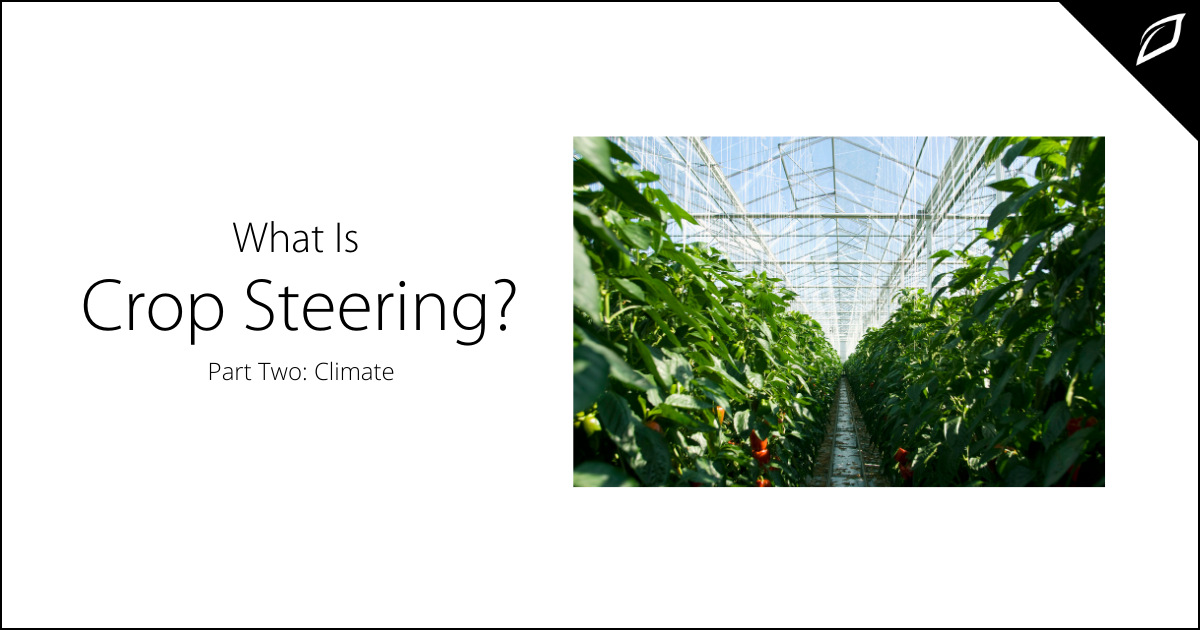
Part Two: Environmental Conditions
In Part Two of this blog, we examine how to apply crop steering techniques using environmental conditions. As we mentioned in Part One of this blog, irrigation impacts how plants grow and can also be used as a steering tool. You can access it here in case you missed it. But let's dig into how changing environmental conditions can impact plant growth.
What Is Crop Steering?
Crop steering manages plant growth by adjusting environmental factors and/or irrigation to encourage a crop's desired outcome. Changing environmental conditions allows growers to influence growth toward vegetative or generative stages. The vegetative stage is the growth of leaves and stems, while the generative is the development of fruits and flowers. For more detailed information on the difference between vegetative and generative growth stages, check out Part One of this blog here.
Steering With Environmental Conditions
Climate has a profound impact on plant growth and, like irrigation, can be used as an effective tool to steer the growth of crops. Increasing or decreasing temperatures, humidity, or airflow will direct the plant energy towards the desired outcome; vegetative or generative growth stage. As with any growing method, these techniques should be tested before rolling it out to your entire operation.
Enhancing Vegetative Growth
When you want to encourage the vegetative growth stage, try variations of the following:
Encouraging Generative Growth
When it's time to get flowering, implement modifications for the following conditions:
Monitor your plants closely and test these strategies before you implement crop steering into your entire grow operation.
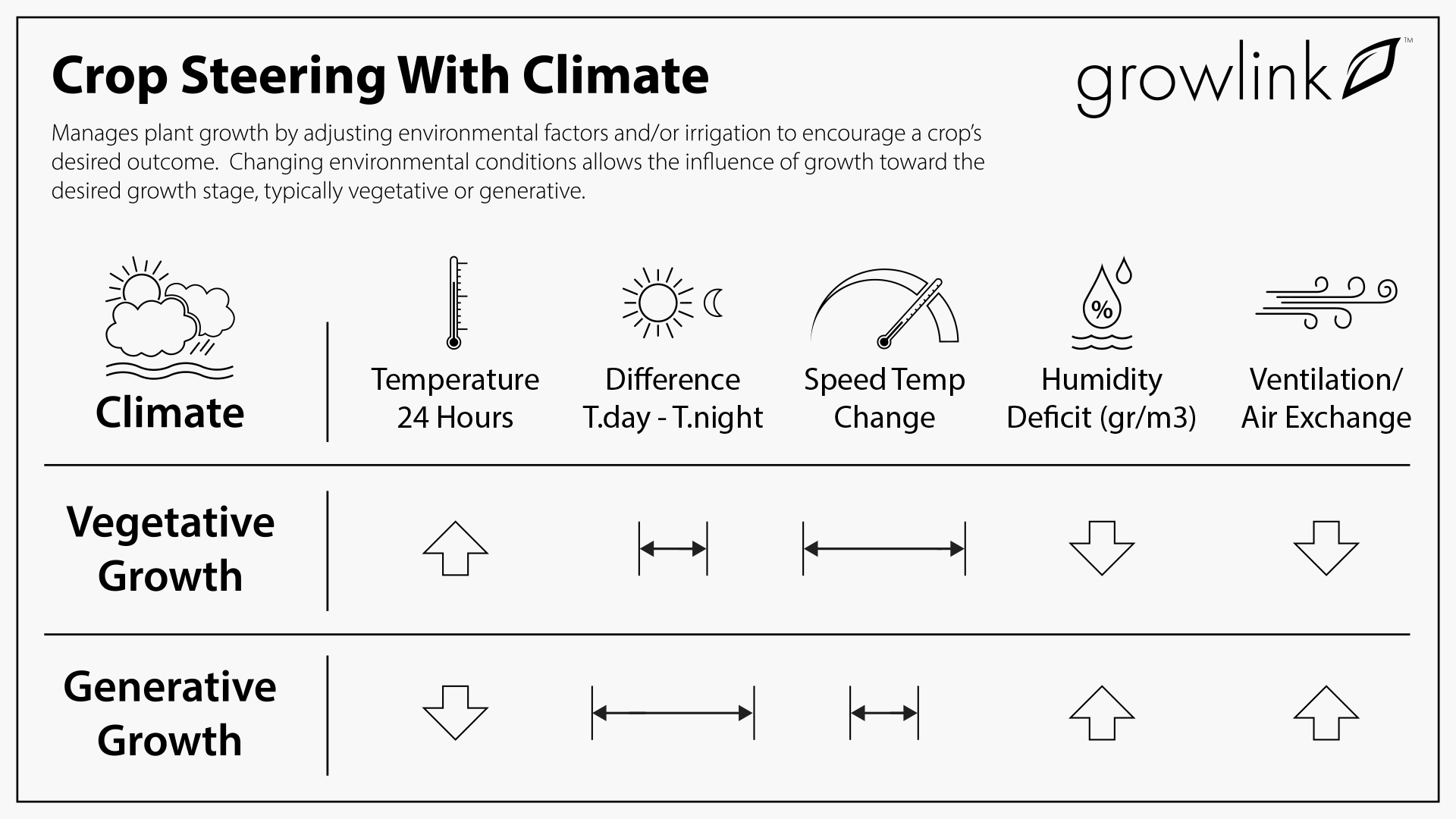
How Automation Can Help
Since increasing, or decreasing humidity, temperature, and airflow are the primary function in crop steering using environmental conditions, automating these tasks provide an advantage over manually turning equipment on or off or opening and closing shades.
Sensors monitor temperature and humidity, and that data can be used to trigger pre-programmed rules to open or close vents or shades using smart motor controllers saving valuable time and resources.
Final Thoughts
Undertaking any new method of growing requires testing and time. It's critical to test a small section before rolling it out to your entire grow operation. Choose your equipment wisely, and be sure to use automation that's reputable and is backed with reliable customer support. For more about crop steering, check out www.cropsteering.com
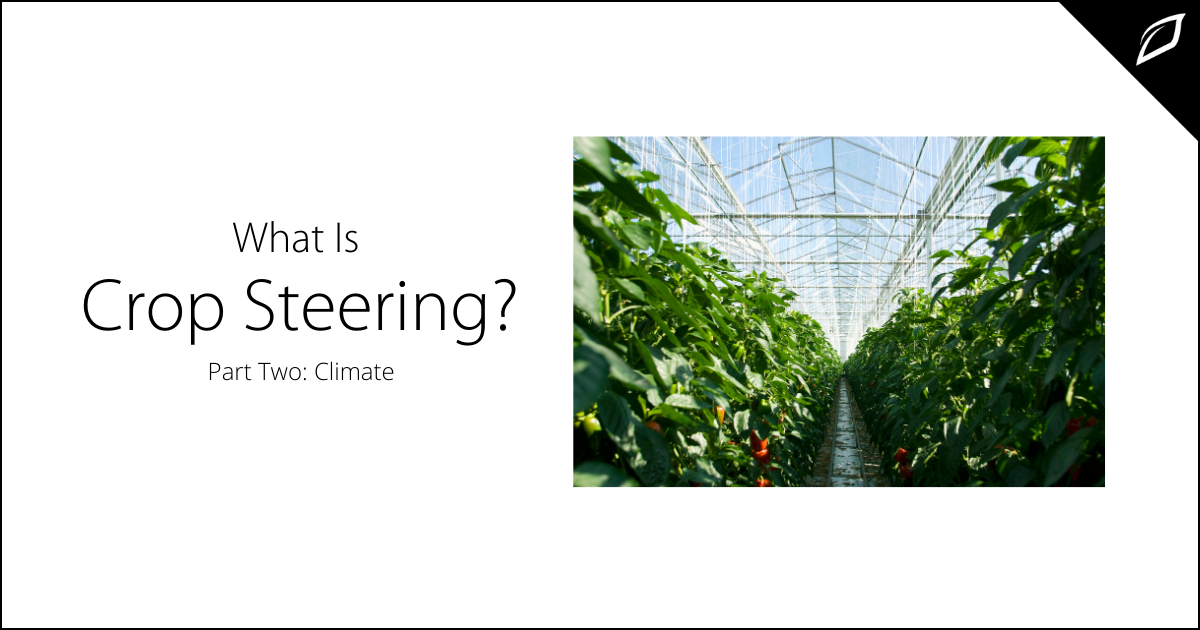

The simple result of an enclosed growing space combined with focused sunlight is an ideal growing space. Humidity, however, can often be an enemy in...
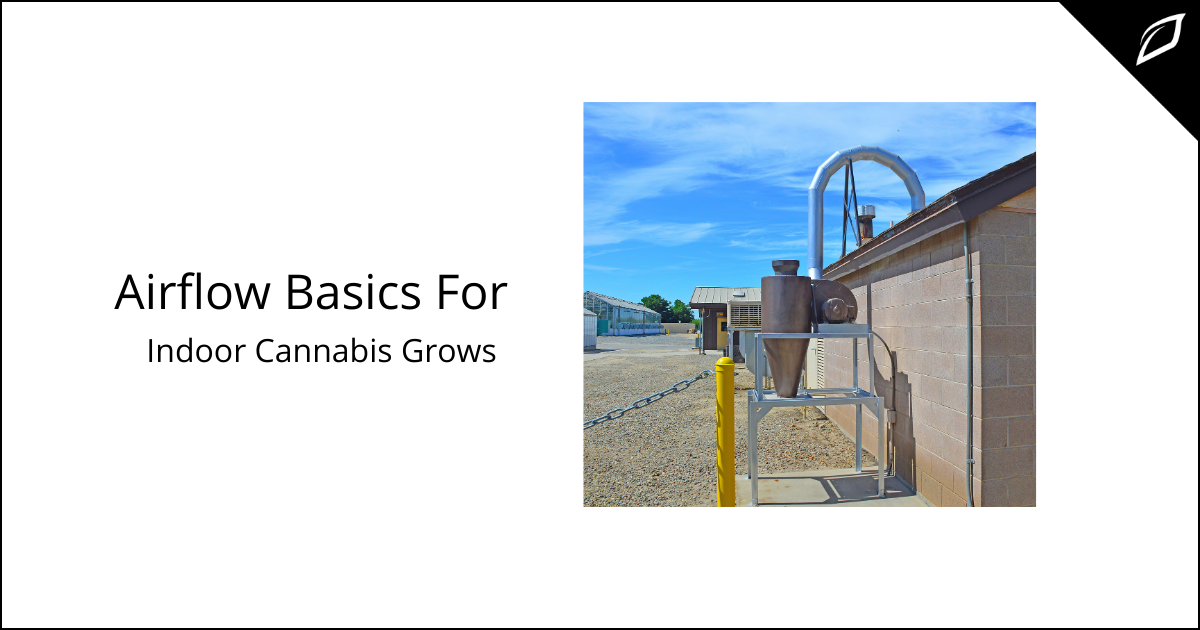
Indoor plants require lighting, water, nutrients, humidity, and air circulation. Proper airflow is a crucial component in growing healthy, vigorous...
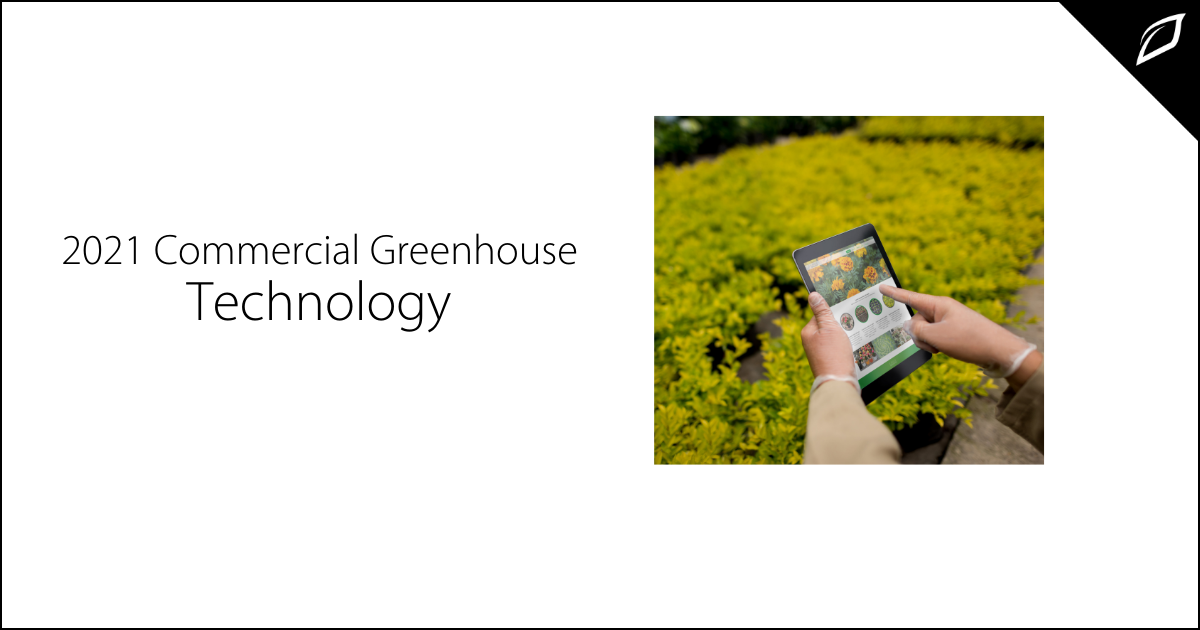
In a world where technology moves at an unprecedented pace, commercial growers require productivity and predictability in their greenhouse...